#explosive detector
Explore tagged Tumblr posts
Text
I'm at the conspiracy theory stage of my White Collar hyperfixation.
In the Season 3 premiere (3.01 On Guard), Neal's tie is sliced during a fencing match and he's forced to put on a new one at the WC office. He puts the new tie around his neck, but then takes a file out of the rack on his desk and moves it to a different part of the rack before starting to tie his tie. Does he have a mirror or something hidden in his file rack??? Was this established or hinted at somewhere else, either in the series or in behind the scenes content? And if there isn't a mirror, then WHY DID HE DO THAT???
#today's episode of 'losing my mind about white collar' is brought to you by me trying to figure out the timeline for the warehouse explosion#I still haven't figured it out to my satisfaction#but as far as I can piece together the warehouse explodes during the day then there's a gap in time until nightfall#Neal arrives home at night/evening to find the key and go to the warehouse with the treasure#and then ends up with Peter and Jones for the lie detector test? which took place for 5 hours overnight in some other warehouse?#and then immediately afterwards he goes to meet Sara at a bookstore without changing his clothes?#and then finally goes back to his loft and talks to Mozzie#still in the same clothes#i think???#what happened in that afternoon gap after the explosion?#was it just cleanup and stuff?#what was Neal doing?#he says 'prove it' and then walks off all angry so I feel like he wouldn't have gone back to the office? but he didn't go home either?#or did he go home but Mozzie hadn't left the key yet but he didn't change his clothes and went back out again at some point?#like that seems overly convoluted#ha! overly convoluted. says the person thinking too hard about something that was probably just hand waved for plot reasons#eh whatever. I like overthinking. I'm having fun and that's what matters#also why did Peter and Jones do their interrogation so clandestinely#like I know Peter wanted it off the bureau's radar#haha radar - because 2.16 was called under the radar#anyways#why not at Neal's loft? why the warehouse?#like I acknowledge that the scene took place where and when it did for the *ambience*#however in-universe it puzzles me#but I'm also super oblivious and certainly not the sharpest tool in the shed so I might just be overlooking a really obvious solution#welp#white collar#episode 2.16#episode 3.01
12 notes
·
View notes
Text
Portable Explosives Detector
Labmate portable explosive detector boasts a 99% detection rate and operates from -15°C to 50°C. It features a 5-inch touchscreen, a power lock option, and the ability to identify nanogram levels of explosives in under 5 seconds with built-in diagnostics and an audio-visual alert system.
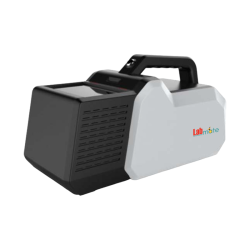
0 notes
Text
sometimes i think about how in batman arkham knight, when he walks through the gcpd every metal detector goes off. it inspired me to think about just how many metal weapons the bat carries on him at all times, enjoy this:
The JLA on an off world mission, negotiating with an Alien species:
Unknown Leader: “Yes, I’m afraid this meeting is under a no weapon policy, so please deposit them here along with any other belongings” holding a large metal box
Ollie: deposits his bow and arrow, along with a knife strapped to his calf
Diana: following suit, depositing her lasso and sword
The others do as well, the box quickly filling with a range of explosives, swords, knives, handheld traps, etc.
Then it gets to Batman…
He was just going to ignore the order, keeping all of his equipment with him before Diana gave him a sharp look, he sighed-
He started with his batarangs, the team expecting him to move on once they were released from his utility belt, but instead he proceeded to pull 2 from his calves, 2 from under his boots, one across his chest (nobody knew that the insignia could also come off??), and 4 hidden under his cape along his back.
Unknown leader: Alright then, we may procee-
Batman released his grappling hook from the belt, along with 4 explosives, 2 smoke bombs, and an emergency flair, putting them in the box as well.
Barry looked at him with utter confusion in his eyes, yet also nodded, clearly impressed. He moved to turn back to the leader but was stopped when Bruce pulled out even more equipment.
He unhooked one ear of his cowl, pulling out 3 different lock picks, the other ear detached and and became a retractable blade. (no one knew how this was possible).
Just when they finally thought it was coming to an end, he takes out 3 more knives lined in his cape pleating, a can of shark repellent?, an inhaler (for Tim), a small tin of hair gel (for Dick), a snickers bar (for Jason), a glitter bomb (for Steph), weighted gloves (for Cass), sunglasses (for Duke, not because of his power but because someone will ask him about the power and he feels he needs the glasses to complete the look), and a juice box (for Damian).
The box is full, the team is bewildered, Bruce has the audacity to ask for a second box. The aliens audibly sigh.
#batfam#dc comics#batman#bat family#jason todd#bruce wayne#justice league#dick grayson#damian wayne#tim drake#stephanie brown#cassandra cain#duke thomas#dc#green arrow#oliver queen#diana prince#wonder woman#headcanon#funny post
3K notes
·
View notes
Text
https://esp-safety.in/product/safety/heat-detection/addressable/ipces
Explosion Proof Heat Detector: Remain secure
With the help of our state-of-the-art Explosion Proof Heat Detector, keep your surroundings safe. This ESP Heat Detector, designed with the highest level of safety in mind, offers sophisticated detection in dangerous areas, guaranteeing prompt alerts and quick action in the event of a threat. Its precisely engineered explosion-proof technology ensures dependability even in the most adverse circumstances. Put your faith in its strong performance to protect your employees and property from fire threats. Peace of mind is a given when using our Explosion Proof Heat Detector, so you can concentrate on your work with assurance knowing that you're covered by the best fire safety gear.

#heat detector#esp heat detector#explosion proof heat detector#smoke and heat detector#smoke detector
0 notes
Text

Portable Explosives Drug Detector LEPD-A10 uses IMS (Ion Mobility Spectrometry) technology to detect trace level of explosives. With higher sensitivity it detects explosive present in nanogram level in a test sample. Various explosives like Black Powder, Ammonium Nitrate (AN), TNT, PETN, RDX, nitro-glycerine, Octo, Tetra, Dinitrotoluene (DNT), C4, Semtex, TATP, etc. can be detected. Features like audio and visual alert system, password lock option, touch screen display, results displayed in few seconds etc. makes it highly efficient. It has wide applications in investigation department, research labs and industries.
0 notes
Text
Tests Begin on Sensitive Neutrino Detector for Nonproliferation, Physics - Technology Org
New Post has been published on https://thedigitalinsider.com/tests-begin-on-sensitive-neutrino-detector-for-nonproliferation-physics-technology-org/
Tests Begin on Sensitive Neutrino Detector for Nonproliferation, Physics - Technology Org
Neutrinos and antineutrinos are nearly massless particles produced in many nuclear reactions, including the fission of uranium in nuclear power plants on Earth and the fusion reactions at the sun’s core.
An array of photomultiplier tubes, used to detect faint sources of light, mounted inside the steel tank of the Eos detector. The photomultiplier tubes will eventually be submerged in water admixed with a novel scintillator that serve as targets for particles such as neutrinos passing through. The particle interactions produce bursts of light that will be captured by the photomultiplier tubes. Image credit: Thor Swift/Berkeley Lab
But they are devilishly hard to detect — most pass through Earth without stopping — making it difficult to study the nuclear reactions taking place at the core of stars or in stellar explosions or to monitor nuclear power plants for illicit production of bomb material.
A new type of neutrino detector is now being tested in a vast underground lab at the University of California, Berkeley, and is designed to leverage the latest technologies to enhance the sensitivity and capabilities of antineutrino detectors. Such improved detectors would not only help detect, localize and characterize undeclared special nuclear material being used contrary to federal or international regulations but also help scientists explore the fundamental physics of particles and their interactions deep in the atom’s nucleus.
Called Eos, for the Titan goddess of dawn, the apparatus signals “the dawn of a new era of neutrino detection technology,” according to Gabriel Orebi Gann, a UC Berkeley associate professor of physics, faculty scientist at Lawrence Berkeley National Laboratory (Berkeley Lab) and the leader of the Eos collaboration.
The prototype detector is funded by the National Nuclear Security Administration, which funds research and development at Department of Energy (DOE) labs to further the nation’s ability to detect, prevent, counter and respond to nuclear security threats — in the case of this research, to detect and characterize nuclear activities and materials remotely, that is, at distances greater than about 100 meters. While radioactivity from nuclear material can be shielded from detection, antineutrinos produced in fission reactions cannot. Because billions of dollars are produced in a reactor in each nanosecond, Eos should be able to detect enough antineutrinos to identify clandestine production of bomb-grade material.
“The idea of neutrino detection is you can’t spoof it, you can’t shield it, you can’t fake it. Neutrinos travel at almost the speed of light, so they provide near-instantaneous detection, even at distance. They offer a unique signature of nuclear activity,” said Orebi Gann. “If you’re either a long way away or you’ve got a very weak signature, then you need a big detector. And for a big detector, you need liquid.”
Gabriel Orebi Gann and Berkeley Lab engineer Joe Saba inspected the Eos detector — 242 photomultiplier tubes surrounding an acrylic tank — as it was lowered into a steel tank on Jan. 26. During testing, the inner acrylic tank will be filled with water and eventually a scintillator that will generate pulses of light when neutrinos or antineutrinos pass through. The photomultiplier tubes detect the light and help determine the energies of the particles and the direction from which they arrived. Image credit: Zara Bagdasarian/UC Berkeley
Eos is a 10-meter-tall, 5-meter-wide cylinder filled with water and an organic scintillator and surrounded by light detectors three times more sensitive than those used in physics experiments today. Eos’s improved sensitivity and higher resolution come from combining two of today’s best techniques for detecting neutrinos: scintillation and Cherenkov emission.
The improvements could be a game-changer for future neutrino physics projects, such as the Deep Underground Neutrino Experiment (DUNE) now being constructed in an abandoned gold mine in Lead, South Dakota, to detect neutrinos emitted by a particle accelerator at Fermi National Laboratory, 500 miles away in Illinois. UC Berkeley and Berkeley Lab are members of the DUNE collaboration.
“What we would ultimately like to build is a much bigger detector called Theia,” she said. “Theia is the Titan goddess of light and Eos’s mother in the pantheon of gods. The ideal location for Theia is in that mine in South Dakota, seeing those neutrinos from Fermilab.”
It remains to be seen whether Theia — which would employ a tank large enough to nearly swallow the Statue of Liberty — will replace one of DUNE’s four planned liquid argon “far” detectors. Orebi Gann argues that a hybrid detector like Theia, while providing comparable sensitivity for studying the high-energy beam of neutrinos that is the primary target of DUNE, would add new capabilities beyond an argon detector, including the ability to detect antineutrinos. Theia also would have a 2-degree pointing accuracy for the location of a supernova via the neutrino burst and would have the capacity to search for low-energy solar neutrinos and Majorana neutrinos.
A hybrid neutrino detector
Eos is unique in being a hybrid of the two main types of liquid neutrino detectors, both of which start with a tank of liquid.
The detector employs several types of photomultiplier tubes. Some, like the one at left front, are encircled by dichroic filters arranged in the shape of a cone — a “dichroicon” — that reflect some wavelengths of light into a photomultiplier tube at the cone’s aperture but allow other wavelengths to pass through to tubes below and behind. This helps to distinguish Cherenkov light from scintillator light. Image credit: Thor Swift/Berkeley Lab
One technique is based on a scintillator — in this case, linear alkylbenzene — that emits light in response to the charged particles produced during interactions with a neutrino or antineutrino.
Neutrinos and antineutrinos can also interact with other materials, such as water, to produce an electron, which then emits its own light, though much fainter than scintillation light. The latter is called Cherenkov radiation and is emitted when the electron plows through the liquid faster than the speed of light in the liquid, akin to the acoustic energy of a sonic boom produced by a plane traveling faster than the speed of sound.
In both techniques, sensitive light detectors called photomultiplier tubes are arrayed around the tank to record the intensity of the faint light. The intensity of the scintillation provides information about the energy of the neutrino or antineutrino. Cherenkov radiation, however, is emitted in a cone, so it can provide information on the direction from which the neutrino came, a critical piece of information for studying nuclear reactor sources as well as cosmic neutrino sources.
“Photomultiplier tubes are sensitive to single photon levels of light,” Orebi Gann said. “But a liquid scintillator gives you a lot more light: If you’ve got an electron at the same energy, you’ll get 50 times more light, depending on the scintillator, than from Cherenkov emission. That means you get better precision for understanding where the energy was deposited and how much energy there was.”
[embedded content]
“We said, OK, we don’t want to pick and choose. We don’t like compromise. We want both. And that’s the goal here. We want the topology of Cherenkov light, but the resolution of scintillation,” she said.
The problem is that light from scintillation is so bright it overwhelms the Cherenkov light.
Luckily, Cherenkov light comes out in a picosecond burst, whereas scintillation light lingers for nanoseconds.
“If you have very fast photon detectors, you can use the time difference to help separate those two signatures,” she said. Eos will surround the liquid tank with 242 photomultiplier tubes made by the Japanese firm Hamamatsu that are three times faster than current photomultipliers.
The visible region of Cherenkov light has a redder color spectrum than scintillation light, which is mostly blue. The team takes advantage of this by surrounding the front row of photomultipliers with a “dichroic” filter that reflects red Cherenkov light into the photomultiplier but lets blue scintillation light pass through to photomultipliers in the back.
“You’re basically sorting your photons by wavelength and directing them to different photon detectors based on the wavelength,” she said.
Orebi Gann and her team began assembling Eos in September, delayed for six weeks by the destruction of the first steel tank when the truck carrying it collided with an overpass. The tanks are so large that the researchers had to house the experiment in a large basement lab — formerly occupied by a nuclear reactor — operated by UC Berkeley’s Department of Nuclear Engineering.
They surrounded the acrylic tank with the photomultiplier tubes, then lifted the whole assembly into a cylindrical steel tank. The internal acrylic tank and the gap between the acrylic and steel tanks were then filled with pure water, submerging the photomultiplier tubes in the gap. Once the team tests the ability of Eos to detect Cherenkov light from artificial radioactive sources and natural, cosmic muons, they will gradually add scintillator material to test the experiment’s ability to discriminate between the two types of light emissions.
“We have also designed our detector so we can deploy pure liquid scintillator,” Orebi Gann said. “This would be the ultimate test: if we can still see the Cherenkov signature even with the maximal scintillation component.”
Plans call for exploring how well Eos can monitor small modular reactors and nuclear-powered maritime vessels and check test site transparency.
Orebi Gann is eager also to employ the Eos design in general neutrino physics studies, such as measuring the flux of neutrinos from the core of the sun to verify the predicted nuclear reactions powering it; investigations of terrestrial sources of neutrinos; mapping the diffuse supernova neutrino background in the Milky Way and beyond; and the ongoing search for neutrinoless double beta decay, which would indicate that a neutrino is its own antiparticle.
All of these questions are already being explored with either the scintillator or Cherenkov detectors, but Orebi Gann is hoping that a hybrid detector will speed progress.
“The same kind of physics that each of those detectors has done in the past, we could do better,” she said. “That’s the goal. It’s R&D for the next generation.”
Source: UC Berkeley
You can offer your link to a page which is relevant to the topic of this post.
#Administration#amp#argon#artificial#atom#background#Blue#Collaboration#Color#Design#detection#detector#development#directing#direction#double#earth#electron#Emissions#energy#Energy & fuel news#Engineer#engineering#explosions#Faculty#Featured technology news#federal#Fermi#filter#Filters
0 notes
Text
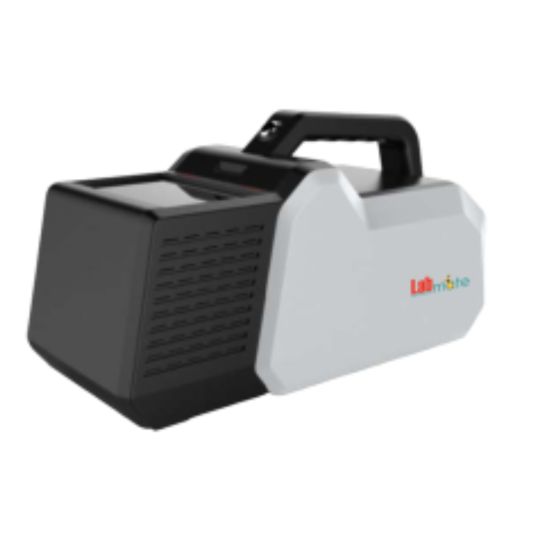
Portable Explosives Detector is a lightweight, user-friendly detector with a 99% detection rate. It is integrated with a 5-inch touchscreen display and power lock option. Our detector is capable of detecting nanogram levels of explosives in test samples within less than 5 seconds. Incorporated a built-in diagnosis function and audio-visual alert system.
0 notes
Text
Portable Explosives Drug Detector

Portable Explosives Drug Detector use Ion Mobility Spectrometry (IMS) technology to identify explosives at trace levels. It can identify explosives at the nanogram level in a test sample with greater sensitivity. There are several explosives that can be identified, including Black Powder, Ammonium Nitrate (AN), TNT, PETN, RDX, nitro-glycerine,features like the touch screen display, password lock option, audio and visual alert system, results displayed in a few seconds, etc. It is widely used in enterprises, research institutes, and departments of inquiry.Self-diagnosis function-built-in diagnostics, power-on self-test;Sensitivit-nanogram;Detection rate-≥ 99%; for more visit labtron.us
0 notes
Text
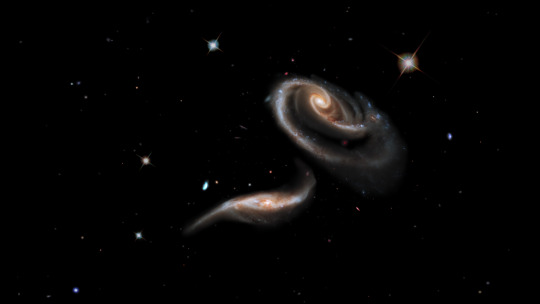
Love Letters from Space
Love is in the air, and it’s out in space too! The universe is full of amazing chemistry, cosmic couples held together by gravitational attraction, and stars pulsing like beating hearts.
Celestial objects send out messages we can detect if we know how to listen for them. Our upcoming Nancy Grace Roman Space Telescope will help us scour the skies for all kinds of star-crossed signals.
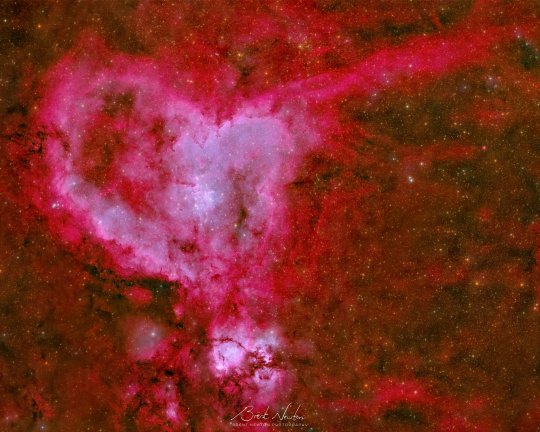
Celestial Conversation Hearts
Communication is key for any relationship – including our relationship with space. Different telescopes are tuned to pick up different messages from across the universe, and combining them helps us learn even more. Roman is designed to see some visible light – the type of light our eyes can see, featured in the photo above from a ground-based telescope – in addition to longer wavelengths, called infrared. That will help us peer through clouds of dust and across immense stretches of space.
Other telescopes can see different types of light, and some detectors can even help us study cosmic rays, ghostly neutrinos, and ripples in space called gravitational waves.
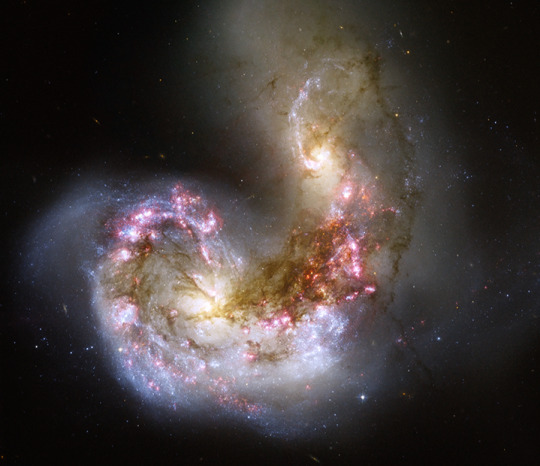
Intergalactic Hugs
This visible and near-infrared image from the Hubble Space Telescope captures two hearts locked in a cosmic embrace. Known as the Antennae Galaxies, this pair’s love burns bright. The two spiral galaxies are merging together, igniting the birth of brand new baby stars.
Stellar nurseries are often very dusty places, which can make it hard to tell what’s going on. But since Roman can peer through dust, it will help us see stars in their infancy. And Roman’s large view of space coupled with its sharp, deep imaging will help us study how galaxy mergers have evolved since the early universe.
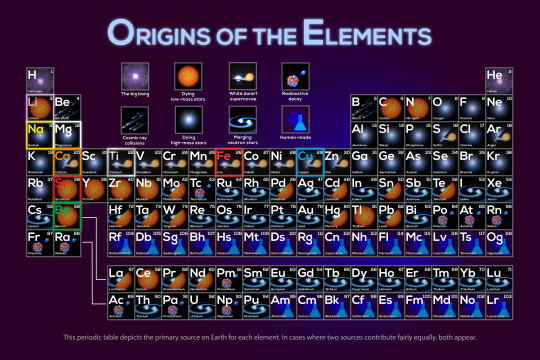
Cosmic Chemistry
Those stars are destined to create new chemistry, forging elements and scattering them into space as they live, die, and merge together. Roman will help us understand the cosmic era when stars first began forming. The mission will help scientists learn more about how elements were created and distributed throughout galaxies.
Did you know that U and I (uranium and iodine) were both made from merging neutron stars? Speaking of which…
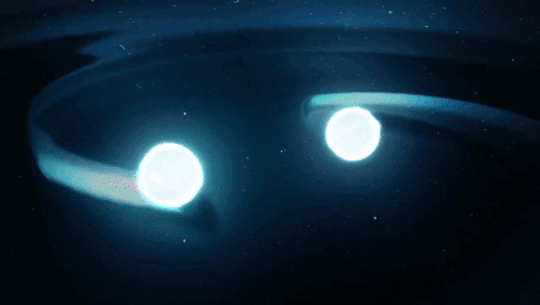
Fatal Attraction
When two neutron stars come together in a marriage of sorts, it creates some spectacular fireworks! While they start out as stellar sweethearts, these and some other types of cosmic couples are fated for devastating breakups.
When a white dwarf – the leftover core from a Sun-like star that ran out of fuel – steals material from its companion, it can throw everything off balance and lead to a cataclysmic explosion. Studying these outbursts, called type Ia supernovae, led to the discovery that the expansion of the universe is speeding up. Roman will scan the skies for these exploding stars to help us figure out what’s causing the expansion to accelerate – a mystery known as dark energy.
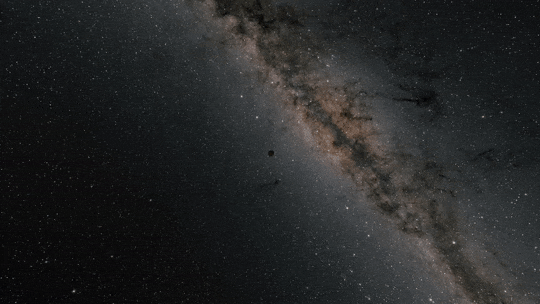
Going Solo
Plenty of things in our galaxy are single, including hundreds of millions of stellar-mass black holes and trillions of “rogue” planets. These objects are effectively invisible – dark objects lost in the inky void of space – but Roman will see them thanks to wrinkles in space-time.
Anything with mass warps the fabric of space-time. So when an intervening object nearly aligns with a background star from our vantage point, light from the star curves as it travels through the warped space-time around the nearer object. The object acts like a natural lens, focusing and amplifying the background star’s light.
Thanks to this observational effect, which makes stars appear to temporarily pulse brighter, Roman will reveal all kinds of things we’d never be able to see otherwise.
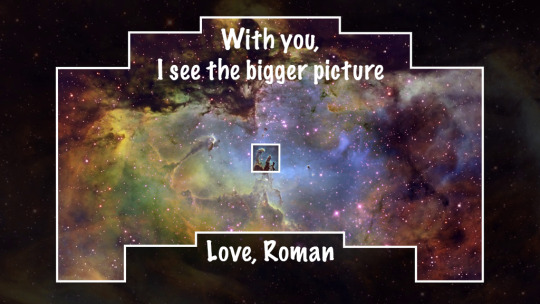
Roman is nearly ready to set its sights on so many celestial spectacles. Follow along with the mission’s build progress in this interactive virtual tour of the observatory, and check out these space-themed Valentine’s Day cards.
Make sure to follow us on Tumblr for your regular dose of space!
#NASA#astronomy#telescope#Roman Space Telescope#Valentine’s Day#space#science#STEM#nebula#chemistry#galaxies#black holes#rogue planets#exoplanets#Hubble Space Telescope#tech
3K notes
·
View notes
Text
Travel Time - Airport and Taking Flight! Sukuna x Reader
Pt 1 - Pt 2 - Pt 3
Husband!Sukuna guides you both through the crowded airport, hand clasping yours tightly as he pulls you close. When the crowd gets especially congested, his large hand migrates to the small of your back, guiding you in front of him to keep you close and prevent others from bumping into you.
Husband!Sukuna is so broad and muscular. Combine that with his face tattoos and people instinctively make space for him. Strangers give him a wary look and then see you next to him, smiling and yapping his ear off, and wonder how you two ended up together.
Husband!Sukuna, who gets mad and mouths off to the airport security when they give you shit because you forget to take your tablet out of your backpack. He hates how your face flushes in embarrassment and tears prick at your kind, soft eyes. While in line for the explosive detector, he drapes his arm over your shoulders, pulling you into his chest and planting a soft kiss on the top of your head. “It’s okay baby they’re just weak and try to pick on nice people like you. I’d like to see them say that shit to me.”
Husband!Sukuna tells you to go sit down while he waits for all your bags to pass through the Xray machine. He hauls them all over, not allowing you to lift a finger. After all, you’d gotten your nails done all pretty for the trip! He helps you situate your backpack on your back, repacking your passport and electronics in their rightful spots.
Husband!Sukuna gets grumpy on the train to the Concourse. It’s so crowded and he’s irritated how people bump into you and encroach on your space. He lets out an annoyed huff, wrapping his strong arms around you from behind, fending off stray bags and people. If you weren’t trying to go on a well needed vacation, he’s bark at these fools and shove them away. He doesn’t want to ruin your time however.
Husband!Sukuna, who entertains your desire to walk the length of the concourse and see where every plane is going. “London! Dubai! Sydney! Johannesburg!” you squeal and point at all the exciting international destinations. Sukuna doesn’t give a shit about this, but seeing you light up at the exotic cities causes his heart to flutter and makes him want to bring you to every single one. Seeing you happy is one of his favorite things, no matter what the cause of that is.
You and Husband!Sukuna find a pair of open seats near your gate and settle down. He reluctantly leaves you alone to go to the bathroom, promising he won’t be long. He reappears a little while later, surprising you with your favorite snacks from the convenience store.
Husband!Sukuna isn’t one for grandiose gestures of love and affection, but all the little things he does never goes unnoticed and gives you a steady supply of love and support, never doubting how much he cares for you.
It’s time to board your flight! Husband!Sukuna boards in an earlier group than you, finding out he’s been upgraded to first class as he scans his ticket. He hopes you have been too. He deposits your carry ons in the overhead compartments and sits down in his spacious seat, eyes glued to the door to catch a glimpse of you.
Husband!Sukuna breathes a sigh of relief as you finally board, but then is distraught when you say you have a seat back in the economy section. He tries to get you to trade with him, but you refuse and the flight attendant tells you to keep going as you are holding up the line.
Once everyone has boarded, Husband!Sukuna leaps up and strides to the back of the plane.
“Switch with me right now, I’ll sit back here,” he demands.
“Kuna you need it more than me, there’s no leg room back here. I’ll be okay.”
“No, I want you to be comfortable. Stop being a brat and go up there.”
“No! I’m not doing that to you!”
“Woman! Get your ass up into first class!”
You don’t move, making Husband!Sukuna clench his jaw in irritation.
“Hey!” he barks at the middle seat passenger next to you. “You wanna swap for my first class seat?” The man can’t believe his ears and nods eagerly.
Husband!Sukuna returns with his bag and slides into the middle seat next to you, his knees pushed up against the seat in front of him. He pulls your bag out from under the seat in front of you and puts it under his, providing you with unobstructed leg room.
“Kuna at least get in the window seat so you aren’t cramped up!”
“No dear. What do you not understand about me wanting you to be comfortable! I’ll be fine.”
You know there’s no arguing with Husband!Sukuna so you just stay put, leaning against his thick arm, leaving a small kiss on his bicep and resting your hand on his thigh. You feel him shiver slightly at your touch, leaning closer to your touches.
Husband!Sukuna holds your hand as the plane takes off, quelling your nerves and offering silent support. His thumb caresses your knuckles in a soothing motion, erasing the worry in your mind.
Husband!Sukuna pats his chest, letting you lean against it, running his fingers through your hair as you doze off, feeling his heartbeat beneath your ear and inhaling his familiar scent. Unbeknownst to you, he leaves soft kisses on your head from time to time. He wants you to sleep as much as you can to be refreshed for when you arrive.
#sukuna x reader#sukuna x y/n#sukuna x you#jjk x reader#jjk x you#sukuna jjk#jjk fluff#sukuna fluff#sukuna ryomen#sukuna headcanons#jjk headcanons#JJK#jujustsu kaisen x reader#jujutsu kaisen
358 notes
·
View notes
Text



You were attempting to bake Martha Kent's famous apple pie. Flour dusted your hair and the kitchen looked like a small, sugary explosion had occurred. You were currently wrestling with the rolling pin, trying to get the stubborn dough to cooperate, muttering under your breath.
Suddenly, a gentle breeze ruffled the curtains, and a familiar figure was leaning against the doorway, arms crossed, a bemused smile playing on his lips. It was Clark.
He watched your valiant struggle for a moment before quietly saying, "Having a little... domestic disturbance?"
You glared at the dough, then at him, leaving a smear of flour on your cheek as you pointed the rolling pin accusingly. "This dough is actively fighting me, Clark. I think it's sentient."
Clark chuckled, pushing off the doorframe and stepping into the kitchen, carefully navigating the minefield of spilled flour and apple chunks. "Maybe it just needs a little... super persuasion?" He wiggled his eyebrows playfully.
You rolled your eyes, but a smile tugged at your lips. "Oh, I'm sure your heat vision would be very persuasive, but I'd rather not end up with a carbonized apple crisp."
He feigned offense. "Hey! I have excellent control. I could probably just... warm it into submission." He made a dramatic gesture with his hands, as if focusing heat vision on the dough.
"Yeah, and probably set off the smoke detector while you're at it," you retorted, finally managing to flatten a section of the dough into a vaguely circular shape. It was still lopsided but progress was progress.
Clark leaned over and peered at your handiwork. "It's... rustic," he offered diplomatically.
"Rustic and slightly terrifying," you corrected. "My culinary skills clearly peaked at making toast."
He chuckled again and reached out, gently taking the rolling pin from your flour-covered hands. "Here, let me show you a trick." He then proceeded to effortlessly roll out the dough into a perfect circle with a few smooth movements, making it look ridiculously easy.
You watched, jaw slightly dropped. "Okay, that's just showing off."
"Maybe a little," he admitted with a sheepish grin. "But hey, at least we'll have a pie that doesn't resemble abstract art."
You playfully swatted his arm, leaving a white streak on his shirt. "Easy for you to say, Mr. Super Kneader."
He grinned, his blue eyes sparkling. "Well, someone has to bring the super to supper." He carefully placed the dough in the pie dish. "Now, about that apple filling..."
You both spent the next few minutes well mostly Clark assembling the pie, with you occasionally "supervising" and offering helpful commentary. By the time the pie was finally in the oven, the kitchen was still a disaster, but the air was filled with the promising scent of cinnamon and apples, and you were both laughing.
"You know," Clark said, leaning against the counter, his arm around your waist, leaving a floury smudge on your back, "maybe we should just stick to you handling the eating part of baking."
You leaned your head on his shoulder, a smile in your voice. "Sounds like a delicious plan."
#clark kent x reader#smallville x reader#clark kent x you#clark kent fanfiction#smallville fanfic#superman x reader#tom welling#tom welling x reader
237 notes
·
View notes
Text
Batman and superman are their opposite personalities in civilian form.
.. so this gives us a perfect opportunity for the most disastrously chaotic dynamic (and love square) EVER.
ESPECIALLY if they don’t know the others true identities, or even they did and are just being lil shits anyways
Give me:
grumpy skeptical Clark to Bruce’s sunshine playboy persona.
Clark *trying to down as many aspirins as he can, half tempted to throw himself into the sun* : Bruce we needed to surround the enemy, not SEDUCE them!
Bruce *currently on his way to a dinner wearing the most seductive outfit known to man* : Well, you know the saying. We can’t gatekeep or manslaughter our way out of it. Girlboss it is.
Clark: Bruce you are going on a date with a STRAIGHT MAN
Bruce: Give me five minutes and then I’ll let you hear him scream my name
*horrified Clark noises*
==================================
Brooding and detective Batman meeting lie-detector and very effective investigator journalist Clark Kent
Batman: Tell me where the bombs are Riddler!
Riddler *currently tied up* : Hehe you’ll never find them~
Clark: Mind if I record this session Mr. Riddler?
Batman:
Riddler:
Clark:
Riddler: Who the hell-
Batman: .. Kent. How’d you even get here?
Clark: Irrelevant questions. *waves recorder* so..?
Riddler: Sure..tell the public I’m going to paint the walls red-
Clark *in investigative journalist mode* : So which devastating rock bottom led you to lose your mind and pursue this as a career?
Riddler:
Riddler: hey wait hang on this is a fulfilling career!
Clark *raising a judgemental eyebrow*: So.. you fighting a man dressed as a bat, with that atrocious outfit you must’ve gotten from hell and riddles that you’ll give him the answer to anyway.. this is fulfilling?
Riddler *voice breaking* : .. yes?
*questioning and judgemental silence*
Few hours later
Red Robin: .. why is Riddler crying and why does he also have a career counselling book in his hand?
Batman *just as surprised and kind of disturbed at how methodical and impressive Clark was in breaking down Riddlers plan based on evidence and connecting the dots* : Honestly I thought he was here for me and he started ignoring me so out of concern for his safety I demanded he paid attention
Red robin: And?
Batman: and he said “oh you don’t want me to pay attention to you” and showed me.. a lot of details and screenshots I don’t know how he got his hands on
Red robin:
Batman: Riddler also then attempted to escape and Clark just.. punched him so hard Riddler still doesn’t know which universe he’s in..
Red robin: well it could’ve been worse.. Clark could’ve pulled out a gun
Batman: .. he has a flamethrower
Red Robin: IM SORRY WHAT
Batman: .. and he told me we should work together sometimes, and I gave him few crime stories and plots to help raise awareness for the public and stop them.
Red robin:
Batman: also he gave me a therapy card.
=========
Give me ray of sunshine and leader Superman with no sense of self preservation Bruce Wayne
Superman: Good evening Mr. Wayne, there’s a credible threat against you so I’ll be on the lookout for today-
Bruce *sidling upto him* : .. damn.. when I said send your hottest stripper you did deliver..
Superman *beet red* : Im not the stripper sir!
Bruce: Really?
Superman *furious nodding*
Bruce: okay then.. hey listen, I’ve been learning about important dates in history lately.. do you wanna be one of them?
Superman. Exe has stopped functioning
Later
Superman: Mr. Wayne there’s a blackout and the building is under attack! Evacuate!
Bruce *running with gunshots behind* : Are you outside? You’re invulnerable right? Nothing can hurt you? Not even gunpowder or explosives?!
Superman *touched and pleasantly surprised* : yes.. so you don’t have to worry about me Mr. Wayn-
*glass breaks and Superman catches the dark mass falling in the air*
Superman: See? You’re safe-
*realises he’s holding a huge bomb about to detonate*
One explosion later
Superman: … you threw a bomb at me
Bruce: What?? You said you were invulnerable! I didn’t know what else to do with it??
Superman: So you didn’t think to tell me? Not even a warning?
Bruce: Listen that bomb was hot but compared to how smoking hot you were I didn’t think it ever stood a change
Superman: Mr. Wayne, listen. You should’ve atleast yelled or said something so I could’ve gotten it away in time. What if I hadn’t?
Bruce: I did! I yelled GET READY FOR A BLOWJOB
Superman:
Bruce:
Superman:
Bruce: ?? Did I do something wrong?
========
And obviously.. the usual golden retriever Superman x black cat Batman that we all know and love so I’m just going to leave it at:
Batman: Someone is going to die.
Superman: Of fun!
Batman: Sure if you consider burning to death fun
Superman:
Superman: Oh come on be a little optimistic! We must have hope! We will persevere!
Batman: we are literally being held hostages by aliens
Superman: ..listen okay, let me do the talking. We just gotta de-escalate the situation
Alien: You intruders! You will never get our superior defender systems-
Batman *done with this bullshit* : I already hacked into it twenty days ago and found all of your identities, families and now have full control over your systems of defends and weapons. If I wanted to hurt somebody.. I would’ve done so already.
Alien *tries to punch him, gets headbutted instead*
Alien *chuckles* : You have a thick skull Batman..
Batman:
Superman *frantic whispering*: Dontsayitdontsayitdontsayitdontsayit-
Batman: .. atleast mines protecting a brain. Wish I could say the same for yours
Superman *heavy sigh*
#superman#batman#superman x batman#superman x Bruce wayne#batman x Clark kent#Bruce wayne x Clark kent#dc#robin#red robin#Tim drake#riddler#the riddle#the batman#batman and robin#dick grayson#red hood#jason todd#batfam#nightwing#bruce wayne#superbat
2K notes
·
View notes
Text
WHAT IS THE COSMIC MICROWAVE BACKGROUND??
Blog#492
Welcome back,
Saturday, March 29th, 2025.
Scientists consider it as an echo or 'shockwave' of the Big Bang. Over time, this primeval light has cooled and weakened considerably; nowadays we detect it in the microwave domain.
ESA's Planck mission detected this first light, which is also the 'oldest' radiation detectable and carries information about our past and future. By observing it, Planck saw the Universe as it was almost at its origin.

The CMB radiation was discovered by chance in 1965. Penzias and Wilson, two radio astronomers in the United States, registered a signal in their radio telescope that could not be attributed to any precise source in the sky.
It apparently came from everywhere with the same intensity, day or night, summer or winter. They concluded that the signal had to come from outside our Galaxy. It came almost from the origin of the Universe.

Scientists considered their discovery as solid evidence for the 'Big Bang' theory. This theory predicted that the 'shockwave' of that primeval explosion would be still detectable as a subtle 'wallpaper' coming from everywhere behind all galaxies, quasars and galaxy clusters.
Today, the Big Bang model is still the only model that is able to convincingly explain the existence of the CMB. According to this model, the Universe started with a very dense and hot phase that expanded and cooled itself; for several hundreds of thousands of years the temperature was so high that neutral atoms could not form.

Matter consisted mostly of neutrons and charged particles (protons and electrons). Electrons interacted closely with the light particles, and therefore light and matter were tightly coupled at that time (that is, light could not travel for a long distance in a straight line). Light could therefore not propagate and the Universe was opaque.
It took about 300 000 years for the Universe to cool down to a temperature at which atoms can form (about 3000 °C). Matter then became neutral, and allowed the light to travel freely: the Universe became transparent. The relic of that 'first light' is the CMB.

Since the time when that radiation was released, the Universe has expanded, becoming at the same time cooler and cooler. The cosmic background has been affected by the same process: it has expanded and cooled down. Space has 'stretched' itself, and with it all length scales.
Light is, after all, a wave, just like waves in the sea, and when you stretch a wave its characteristic length scale (as well as its ‘frequency’) changes. Today, we can detect the CMB at microwave frequencies or length scales, which are much longer than, for example, the length scales to which our eyes are can see.

For this reason, human eyes cannot see the microwaves from the CMB (or X-rays or infrared rays either). However, using specially designed detectors, such as those carried by Planck, we can.
The CMB is the farthest and oldest light any telescope can detect. It is impossible to see further beyond the time of its release because then the Universe was completely 'opaque'. The CMB takes astronomers as close as possible to the Big Bang, and is currently one of the most promising ways we have of understanding the birth and evolution of the Universe in which we live.
Originally published on https://www.esa.int
COMING UP!!
(Wednesday, April 2nd, 2025)
"WHAT DOES IT MEAN TO LIVE IN A QUANTUM UNIVERSE??"
#astronomy#outer space#alternate universe#astrophysics#universe#spacecraft#white universe#parallel universe#space#astrophotography
58 notes
·
View notes
Text
the “dorner truck explosion” mentioned in The Lexington Letter (a companion short story for Severance) is also mentioned in The You You Are.
in The Lexington Letter, peg kincaid details her experience as a severed employee. peg and her innie, peggy k, begin to communicate using a made up language from peg’s youth. peggy k initiates the contact explaining that the language has been in her head for weeks. since the language is made of symbols rather than letters, the code detectors are seemingly unable to detect the notes. she eventually explains her decision to leave the company after connecting the dorner therapeutics truck explosion with her innie’s completion of the lexington file.

peg explains this weird connection to her innie, and their communication goes dark for some time. peggy k ends up telling peg to leave lumon after many shifts in the break room. with this final note, peg is given a microdata refinement orientation booklet.
in The You You Are, the dorner truck explosion is mentioned again.

this has got me wondering if we will be seeing a mention of this in the show itself, or if we may see a connection between microdata refinement and some type of corporate espionage?
#probably not since everyone is on side quests and not really refining#fun to think about nonetheless#the lexington letter#the you you are#severance#severance season 2#gimme the lore
89 notes
·
View notes
Text
Interesting: Bee explosive detector 🤔
#pay attention#educate yourselves#educate yourself#reeducate yourselves#knowledge is power#reeducate yourself#think about it#think for yourselves#think for yourself#do your homework#do your research#do your own research#ask yourself questions#question everything#bees#say what#interesting#science
137 notes
·
View notes
Text
Tests begin on sensitive neutrino detector for nonproliferation as well as physics - Technology Org
New Post has been published on https://thedigitalinsider.com/tests-begin-on-sensitive-neutrino-detector-for-nonproliferation-as-well-as-physics-technology-org/
Tests begin on sensitive neutrino detector for nonproliferation as well as physics - Technology Org
Neutrinos and antineutrinos are nearly massless particles produced in many nuclear reactions, including the fission of uranium in nuclear power plants on Earth and the fusion reactions at the sun’s core.
An array of photomultiplier tubes, used to detect faint sources of light, mounted inside the steel tank of the Eos detector. The photomultiplier tubes will eventually be submerged in water admixed with a novel scintillator that serve as targets for particles such as neutrinos passing through. The particle interactions produce bursts of light that will be captured by the photomultiplier tubes. Image credit: Thor Swift/Berkeley Lab
But they are devilishly hard to detect — most pass through Earth without stopping — making it difficult to study the nuclear reactions taking place at the core of stars or in stellar explosions or to monitor nuclear power plants for illicit production of bomb material.
A new type of neutrino detector is now being tested in a vast underground lab at the University of California, Berkeley, and is designed to leverage the latest technologies to enhance the sensitivity and capabilities of antineutrino detectors. Such improved detectors would not only help detect, localize and characterize undeclared special nuclear material being used contrary to federal or international regulations but also help scientists explore the fundamental physics of particles and their interactions deep in the atom’s nucleus.
Called Eos, for the Titan goddess of dawn, the apparatus signals “the dawn of a new era of neutrino detection technology,” according to Gabriel Orebi Gann, a UC Berkeley associate professor of physics, faculty scientist at Lawrence Berkeley National Laboratory (Berkeley Lab) and the leader of the Eos collaboration.
The prototype detector is funded by the National Nuclear Security Administration, which funds research and development at Department of Energy (DOE) labs to further the nation’s ability to detect, prevent, counter and respond to nuclear security threats — in the case of this research, to detect and characterize nuclear activities and materials remotely, that is, at distances greater than about 100 meters. While radioactivity from nuclear material can be shielded from detection, antineutrinos produced in fission reactions cannot. Because billions of dollars are produced in a reactor in each nanosecond, Eos should be able to detect enough antineutrinos to identify clandestine production of bomb-grade material.
“The idea of neutrino detection is you can’t spoof it, you can’t shield it, you can’t fake it. Neutrinos travel at almost the speed of light, so they provide near-instantaneous detection, even at distance. They offer a unique signature of nuclear activity,” said Orebi Gann. “If you’re either a long way away or you’ve got a very weak signature, then you need a big detector. And for a big detector, you need liquid.”
Gabriel Orebi Gann and Berkeley Lab engineer Joe Saba inspected the Eos detector — 242 photomultiplier tubes surrounding an acrylic tank — as it was lowered into a steel tank on Jan. 26. During testing, the inner acrylic tank will be filled with water and eventually a scintillator that will generate pulses of light when neutrinos or antineutrinos pass through. The photomultiplier tubes detect the light and help determine the energies of the particles and the direction from which they arrived. Image credit: Zara Bagdasarian/UC Berkeley
Eos is a 10-meter-tall, 5-meter-wide cylinder filled with water and an organic scintillator and surrounded by light detectors three times more sensitive than those used in physics experiments today. Eos’s improved sensitivity and higher resolution come from combining two of today’s best techniques for detecting neutrinos: scintillation and Cherenkov emission.
The improvements could be a game-changer for future neutrino physics projects, such as the Deep Underground Neutrino Experiment (DUNE) now being constructed in an abandoned gold mine in Lead, South Dakota, to detect neutrinos emitted by a particle accelerator at Fermi National Laboratory, 500 miles away in Illinois. UC Berkeley and Berkeley Lab are members of the DUNE collaboration.
“What we would ultimately like to build is a much bigger detector called Theia,” she said. “Theia is the Titan goddess of light and Eos’s mother in the pantheon of gods. The ideal location for Theia is in that mine in South Dakota, seeing those neutrinos from Fermilab.”
It remains to be seen whether Theia — which would employ a tank large enough to nearly swallow the Statue of Liberty — will replace one of DUNE’s four planned liquid argon “far” detectors. Orebi Gann argues that a hybrid detector like Theia, while providing comparable sensitivity for studying the high-energy beam of neutrinos that is the primary target of DUNE, would add new capabilities beyond an argon detector, including the ability to detect antineutrinos. Theia also would have a 2-degree pointing accuracy for the location of a supernova via the neutrino burst and would have the capacity to search for low-energy solar neutrinos and Majorana neutrinos.
A hybrid neutrino detector
Eos is unique in being a hybrid of the two main types of liquid neutrino detectors, both of which start with a tank of liquid.
The detector employs several types of photomultiplier tubes. Some, like the one at left front, are encircled by dichroic filters arranged in the shape of a cone — a “dichroicon” — that reflect some wavelengths of light into a photomultiplier tube at the cone’s aperture but allow other wavelengths to pass through to tubes below and behind. This helps to distinguish Cherenkov light from scintillator light. Image credit: Thor Swift/Berkeley Lab
One technique is based on a scintillator — in this case, linear alkylbenzene — that emits light in response to the charged particles produced during interactions with a neutrino or antineutrino.
Neutrinos and antineutrinos can also interact with other materials, such as water, to produce an electron, which then emits its own light, though much fainter than scintillation light. The latter is called Cherenkov radiation and is emitted when the electron plows through the liquid faster than the speed of light in the liquid, akin to the acoustic energy of a sonic boom produced by a plane traveling faster than the speed of sound.
In both techniques, sensitive light detectors called photomultiplier tubes are arrayed around the tank to record the intensity of the faint light. The intensity of the scintillation provides information about the energy of the neutrino or antineutrino. Cherenkov radiation, however, is emitted in a cone, so it can provide information on the direction from which the neutrino came, a critical piece of information for studying nuclear reactor sources as well as cosmic neutrino sources.
“Photomultiplier tubes are sensitive to single photon levels of light,” Orebi Gann said. “But a liquid scintillator gives you a lot more light: If you’ve got an electron at the same energy, you’ll get 50 times more light, depending on the scintillator, than from Cherenkov emission. That means you get better precision for understanding where the energy was deposited and how much energy there was.”
[embedded content]
“We said, OK, we don’t want to pick and choose. We don’t like compromise. We want both. And that’s the goal here. We want the topology of Cherenkov light, but the resolution of scintillation,” she said.
The problem is that light from scintillation is so bright it overwhelms the Cherenkov light.
Luckily, Cherenkov light comes out in a picosecond burst, whereas scintillation light lingers for nanoseconds.
“If you have very fast photon detectors, you can use the time difference to help separate those two signatures,” she said. Eos will surround the liquid tank with 242 photomultiplier tubes made by the Japanese firm Hamamatsu that are three times faster than current photomultipliers.
The visible region of Cherenkov light has a redder color spectrum than scintillation light, which is mostly blue. The team takes advantage of this by surrounding the front row of photomultipliers with a “dichroic” filter that reflects red Cherenkov light into the photomultiplier but lets blue scintillation light pass through to photomultipliers in the back.
“You’re basically sorting your photons by wavelength and directing them to different photon detectors based on the wavelength,” she said.
Orebi Gann and her team began assembling Eos in September, delayed for six weeks by the destruction of the first steel tank when the truck carrying it collided with an overpass. The tanks are so large that the researchers had to house the experiment in a large basement lab — formerly occupied by a nuclear reactor — operated by UC Berkeley’s Department of Nuclear Engineering.
They surrounded the acrylic tank with the photomultiplier tubes, then lifted the whole assembly into a cylindrical steel tank. The internal acrylic tank and the gap between the acrylic and steel tanks were then filled with pure water, submerging the photomultiplier tubes in the gap. Once the team tests the ability of Eos to detect Cherenkov light from artificial radioactive sources and natural, cosmic muons, they will gradually add scintillator material to test the experiment’s ability to discriminate between the two types of light emissions.
“We have also designed our detector so we can deploy pure liquid scintillator,” Orebi Gann said. “This would be the ultimate test: if we can still see the Cherenkov signature even with the maximal scintillation component.”
Plans call for exploring how well Eos can monitor small modular reactors and nuclear-powered maritime vessels and check test site transparency.
Orebi Gann is eager also to employ the Eos design in general neutrino physics studies, such as measuring the flux of neutrinos from the core of the sun to verify the predicted nuclear reactions powering it; investigations of terrestrial sources of neutrinos; mapping the diffuse supernova neutrino background in the Milky Way and beyond; and the ongoing search for neutrinoless double beta decay, which would indicate that a neutrino is its own antiparticle.
All of these questions are already being explored with either the scintillator or Cherenkov detectors, but Orebi Gann is hoping that a hybrid detector will speed progress.
“The same kind of physics that each of those detectors has done in the past, we could do better,” she said. “That’s the goal. It’s R&D for the next generation.”
Source: UC Berkeley
You can offer your link to a page which is relevant to the topic of this post.
#Administration#amp#argon#artificial#atom#background#Blue#Collaboration#Color#Design#detection#detector#development#directing#direction#double#earth#electron#Emissions#energy#Energy & fuel news#Engineer#engineering#explosions#Faculty#federal#Fermi#filter#Filters#fission
0 notes